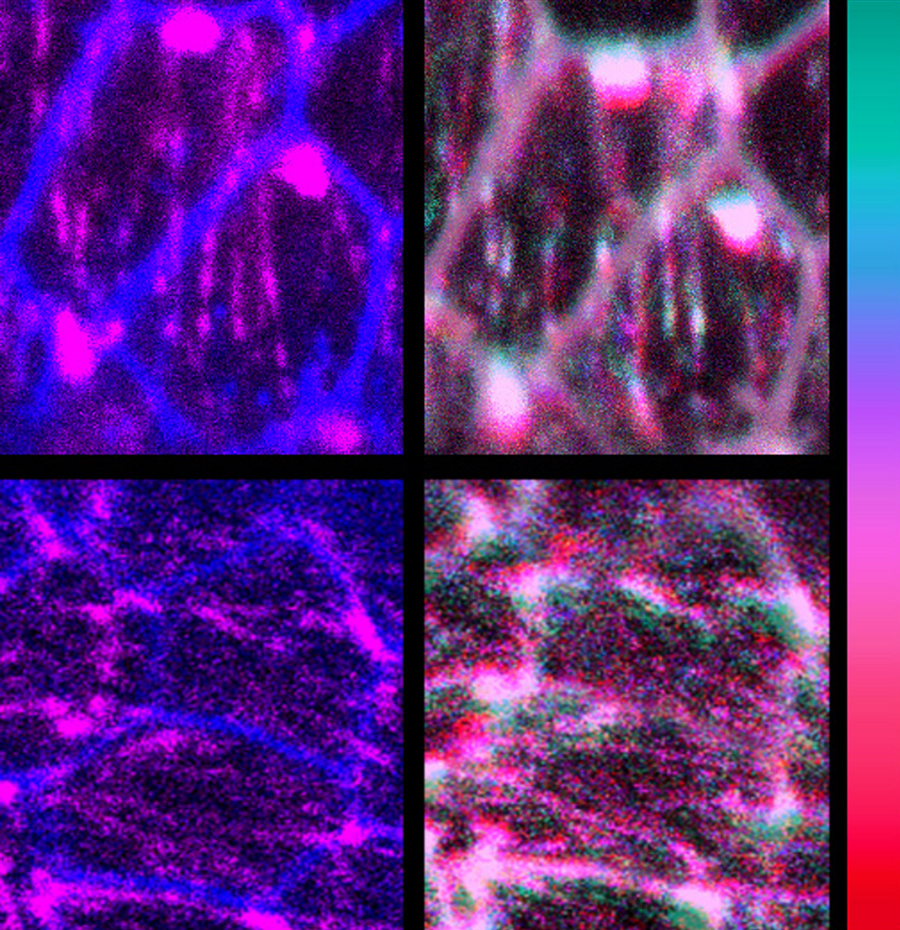
Synchronized vs. desynchronized internal machineries of cruising cells.
The movement of epithelia - sheets of cells that cover the surface of tissues - is essential for the formation and function of organs and bodies. To facilitate epithelial movements, cells need a source of mechanical force and a collective decision in which direction to move.
Using high-speed confocal imaging, researchers in the Tomancak lab in collaboration with the Scientific Computing Facility at the MPI-CBG set out to investigate the mechanism that underlies this coordinated movement of cells covering egg chambers in the fruit fly, Drosophila melanogaster.
Ivana Viktorinová, the leading author of the recently published paper in PLoS Genetics, says: “Imagine cells as cruising galley ships. Each cell has internal machinery that behaves like the oars of the ship, generating the force that the cell needs to move forward. In order for a cell to move, their internal machinery must row in synchrony within one cell and also with the other cells. We sought to understand how this could be achieved and how the direction of movement between cells is coordinated within the epithelial tissue without the presence of leading cells – a typical situation for tubular vertebrate organs”.
The team found a protein that is not only essential for the synchronization of all epithelial cells in order to define their collective movement, but importantly also for its function to direct the internal machinery in each cell. The authors hope that these findings will help to better understand how vertebrate organs are formed.
Ivana Viktorinová, Ian Henry, Pavel Tomancak: Epithelial rotation is preceded by planar symmetry breaking of actomyosin and protects epithelial tissue from cell deformations Plos Genetics November 27, 2017